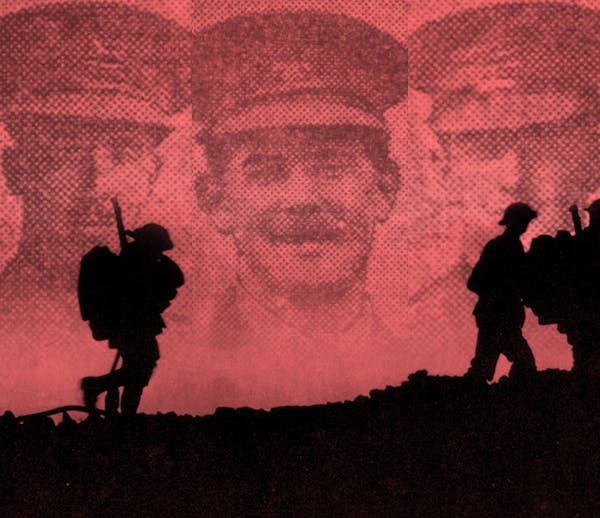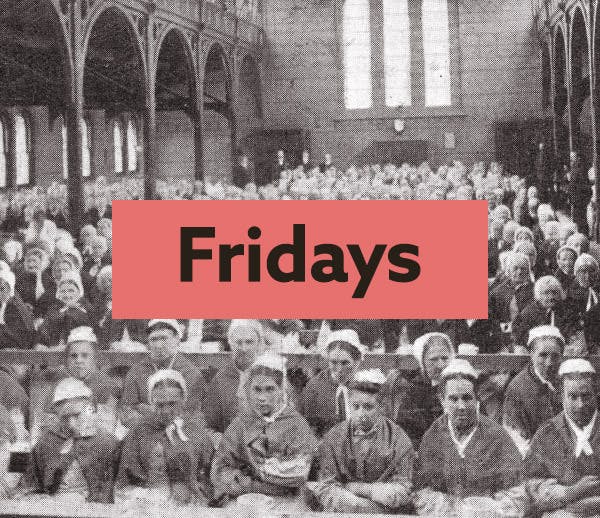Scour a slew of extensive social history collections with this week's release
4-5 minute read
By Jessie Ohara | September 2, 2022
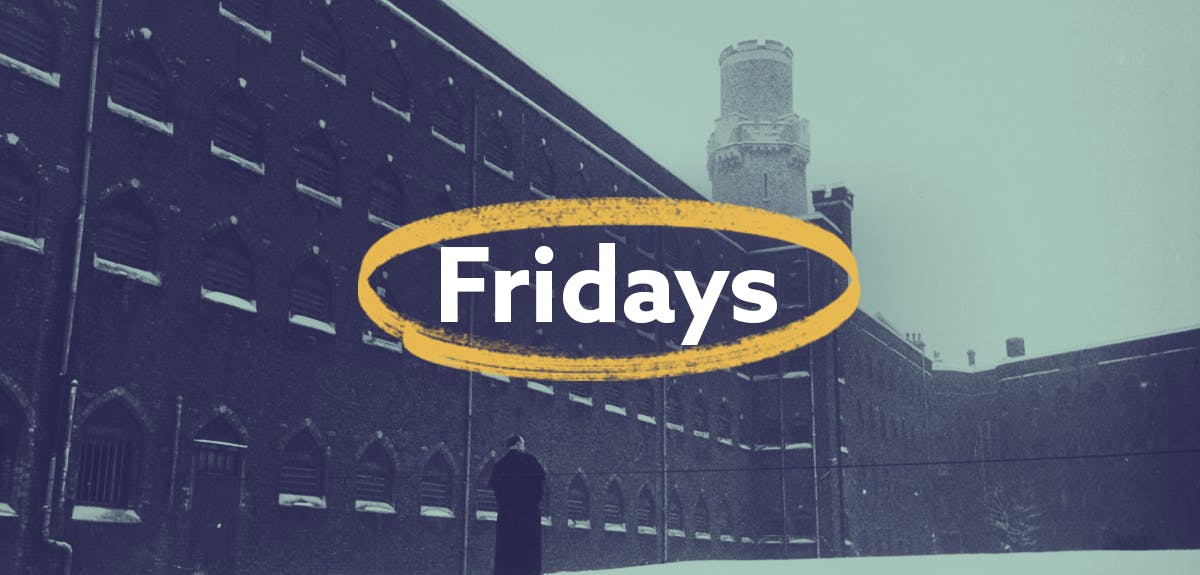
From institutions and hospital admissions to unlawful infractions and brushes with the law, there's a whole host of untold stories to be discovered.
BMDs may be the building blocks of genealogy, but releases like this one help add foliage to the branches of your family tree. Here's a rundown of everything that's new - you might just discover a whole new aspect to your ancestor's life.
Yorkshire, Sheffield Crime Courts and Convicts 1769-1931
Did you have a rogue ancestor who fell foul to the law? These records can help you find out.
There are over 206,000 records in this collection, spanning 162 years. Each record will give standard information such as name, age, birth year, and event date. Make sure to check 'Other details', though - this is where you'll discover the nature of your ancestor's infraction.
These records were transcribed from original documents held by Sheffield Archives and Local Studies and comprise:
- Cases prosecuted for desertion, neglect of their children, c1904-1908
- General gaol delivery, Yorkshire 1841
- Orders for bankruptcy hearing
- Police charge book 1838-1865
- Prosecutions of felons 1837
- Quarter Sessions prison calendar 1880-1931
- Sheffield, Magistrates Court Register 1882-1917
- Sheffield Police Ticket of Leave register, 1864-1874
- Sheffield Police, Conduct and Commendation Book, 1831-1893
- Sheffield Quarter Sessions prison calendar
- Sheffield Watch Committee minutes 1891-1896
- York Castle prison calendar 1769
- Yorkshire Assizes prison calendar 1841-1842
- General Gaol Delivery, Yorkshire 1841
In other words, if your ancestor is found to be in this collection, don't simply assume they had a flair for flouting the rules - they may have been one of the policemen charged with catching the criminals.
In saying that, we found over 1,800 people charged with being drunk and disorderly in these pages, as well as a few slightly more niche crimes. Meet 15-year-old Edward Kershaw, charged with stealing pigeons, or seven-year-old Bernard Robinson, who decided to thieve not one but 18 boxes of chocolates.
Yorkshire, Sheffield Social and Institutional Records 1558-1939
Covering an incredible 381 years of history, this collection comprises nearly 48,000 social and institution records across a wide range of subjects.
You will find information such as name, age, occupation and event year, as well as other details where relevant. The indexes in this collection include:
- Bradfield Lent Book, 1558
- Apprentices, 1676-1833
- Settlement certificates, 1700-1810
- Removal orders, 1701-1844
- Sheffield Highways assessment, 1711
- List of papist estates, 1715
- Whiston indentures, 1728-1738
- Slaughterhouse agreement, 1750-1780
- List of paupers, 1751-1808
- Sketchley’s Sheffield Directory, 1774
- List of Tontine Inn subscribers, 1785
- Gales & Martin’s Directory of Sheffield, 1787
- List of subscribers to new Coffee House, 1795
- Corn loan guarantors, 1795
- Sheffield in 1797
- J. Robinson's Directory of Sheffield, 1797
- Ecclesall Bierlow Workhouse, register of inmates, 1812-1915
- Petition of the Catholic inhabitants of Sheffield, 1815
- Society for bettering the conditions of the Poor in Sheffield, appeal for funds, 1818
- Bradfield Workhouse admissions and discharges, 1818-1849
- Sheffield & Rotherham banks resolution, 1825
- List of Members of Bradfield Game Association, 1838
- List of able poor, 1843
- Ecclesall National School exam schedule, 1844-1890
- Sheffield, Nether Chapel Membership list, 1845
- Deakin Institution annual report, 1863
- Sheffield flood, list of dead and missing, 1864
- Deakin Institution list of governors, 1867
- Sheffield & Rotherham Red Book & Almanac, 1870-1885
- Cemetery Rd Congregational Church subscriber, 1873
- Dungworth School, Sheffield, exam schedule, 1876-1895
- List of pupil teachers, 1877-1881
- Register of canal boats, 1878-1924
- Vickers Ltd training record, 1911-1930
- Sheffield Sunday School, Band of Hope programme, 1912
- Upton Colliery signing-in book, 1936-1939
Despite covering everything from exam schedules to canal boat registrations, the majority of these records are workhouse admission and discharge books, from both the Bradfield Workhouse and the Ecclesall Bierlow Workhouse.
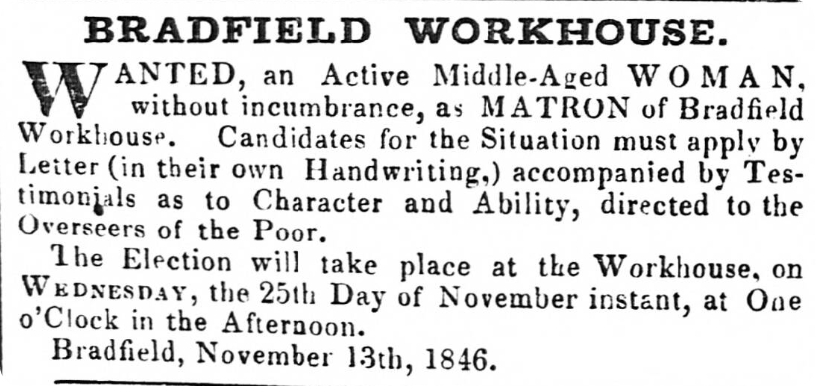
An 1846 job advert for Bradfield Workhouse, found in the Sheffield Independent.
However, you'll also find meticulous records pertaining to significant local events, such as a list of the dead and missing in the 1864 Sheffield Flood.
Yorkshire, Sheffield, Asylum & Hospital Admissions & Subscriptions 1748-1937
This collection is composed of nearly 200 years of hospital and asylum admissions throughout the late 18th, 19th, and early 20th centuries.
This collection includes:
- General Infirmary, list of subscribers
- House of Help for Friendless Women and Girls, casebook 1888-1906
- South Yorkshire Asylum admission register
- Subscribers to annuities
- Subscribers to Sheffield Infirmary
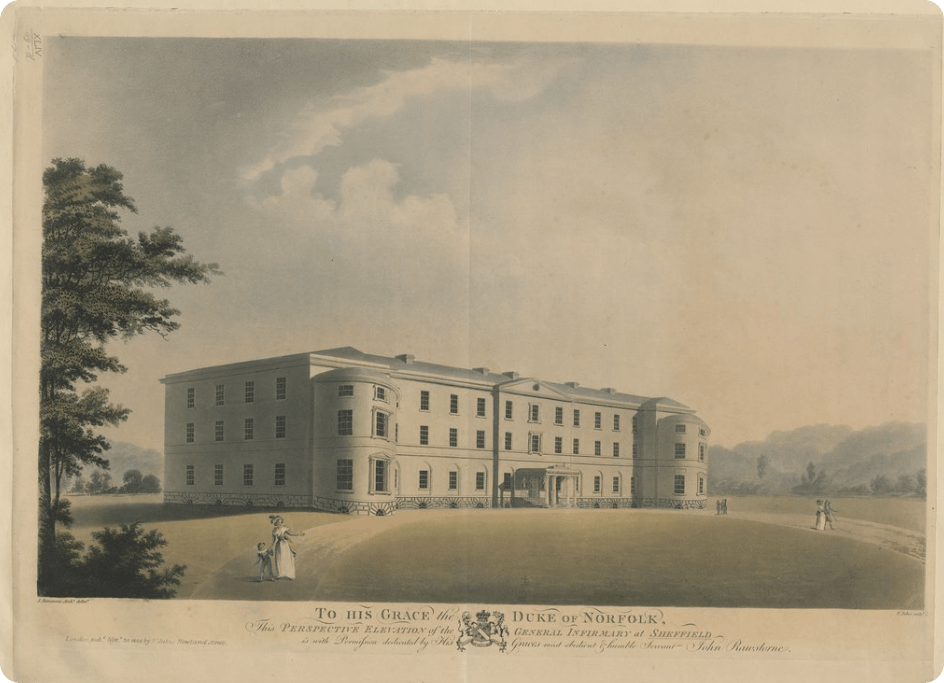
An 1804 aquatint print of the General Infirmary of Sheffield, from the The Topographical Collection of George III.
The asylum admission registers are the largest book in this collection, and most entries will also give you an occupation for the patient.
If you find an ancestor in any of these three collections, we'd recommend contacting Sheffield City Archives and Local Studies Library, who can supply copies of records for private study purposes, subject to copyright restrictions.
From England to America and beyond...
We've added 10 new titles to our newspaper archive this week, and updated 28 existing titles. Our new titles span across Scotland and England, all the way to 19th-century Chicago with our second American title, the Chicago Citizen.
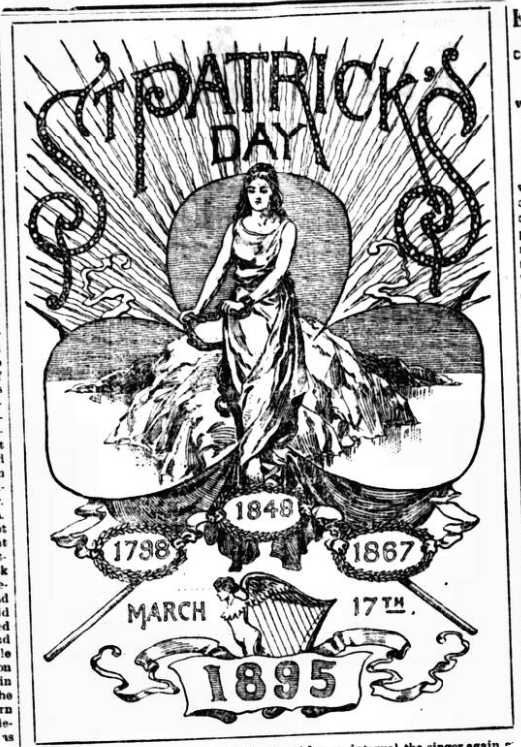
A St. Patrick's Day illustration in the Chicago Citizen, 1895.
This newspaper specifically represented American Irish interests, calling itself the ‘Official Newspaper of the United Irish Societies of Chicago and Cook County'. Chicago was the fastest growing city in America at the time, and had a large Irish population. Within the pages of the Chicago Citizen, you'll find poetry written in Gaelic, St. Patrick's Day illustrations, advertisements for Irish theatre, and short articles on Irish history.

An advertisment for 'Rory of the Hill', 1895, Chicago Citizen.
If this doesn't capture your intrigue, read on for the full list of new and updated newspaper titles. When one does catch your eye, just head to our newspaper archive and filter by title.
New titles:
- Chicago Citizen, 1890-1897
- Derby Exchange Gazette, 1861
- Falkirk Express, 1882
- Harrogate Advertiser and Weekly List of the Visitors, 1865, 1877, 1880, 1889
- Liverpool Shipping Telegraph and Daily Commercial Advertiser, 1846-1849, 1851-1872, 1874-1876, 1880, 1885-1897, 1899
- Loughton and District Advertiser, 1887
- Medway News, 1994
- National Advertiser and Edinburgh and Glasgow Gazette, 1848
- National Independent and People’s Advocate, 1878
- Plymouth Mail, 1861
Updated titles:
- Aberdare Times, 1892
- Belper Express, 1995
- Birmingham Mail, 1979-1980, 1982-1985
- Blackburn Standard, 1897
- Brentwood Gazette, 1994
- Bridport News, 1882-1883
- Cambridge Daily News, 1999
- Cambridge Weekly News, 1994
- Cannock Chase Post, 1994
- Haverfordwest & Milford Haven Telegraph, 1889
- Hertford Mercury and Reformer, 1999
- Hull and Eastern Counties Herald, 1877
- Leicester Daily Mercury, 1980, 1982-1987
- Liverpool Mail, 1875
- Nottingham Evening Post, 1999
- Pembrokeshire Herald, 1854
- Rhondda Leader, 1995
- Ripley Express, 1995
- Rugeley Mercury, 1995
- Runcorn Weekly News, 1999
- Sandwell Evening Mail, 1980-1984
- Sports Argus, 1994
- St Neots Town Crier, 1998
- Surrey Herald, 1994
- Thanet Times, 1995
- Torbay Express and South Devon Echo, 1924, 1941-1945, 1968, 1974, 1978, 1983-1988
- Waltham Abbey and Cheshunt Weekly Telegraph, 1893-1894
- Wells Journal, 1991-1999
Have you made any incredible discoveries this week? We're always on the lookout for stories to feature, so email us at [email protected] for a chance to showcase your findings.


